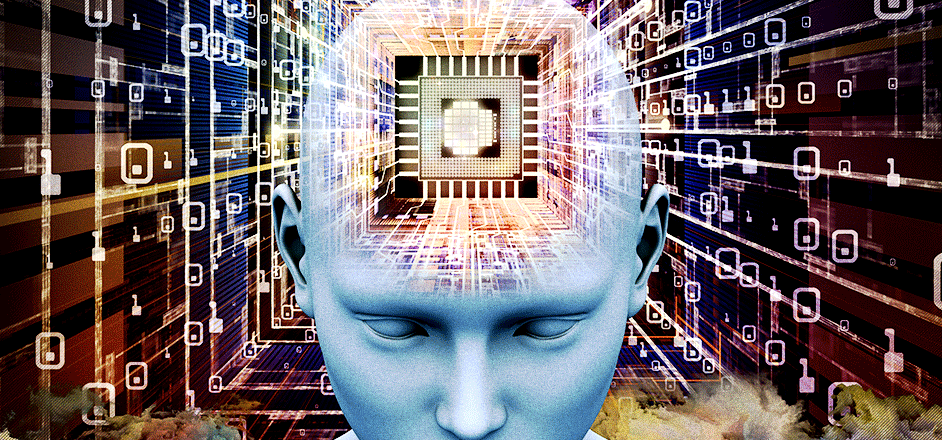It’s finally happening. The intersection of biological and computer intelligence is incoming, and Elon Musk’s recent livestream of the Neuralink Launch Event, suggests it’s a lot closer than most had imagined.
There have been rumblings of Musk’s computer-brain implant company, Neuralink, for over a year, now. In fact, I wrote about the company when whispers of it were first rippling through the internet. But this week, was the first time the celebrity engineer Tech-magnet actually came out to openly tell the world about his brain implant computer technology and what he aims to do with it.
“Even in a benign AI scenario – and let’s hope it is benign – we will be left behind,” Musk said, opening the livestream event, which aired July 16th. “With a high bandwidth and machine interface I think we can go along for the ride and we can effectively have the option of merging with AI.”
Musk admitted at the beginning of the talk that the company wasn’t going to reveal much, but that the livestream update was really more of a recruitment (and marketing) tool. Musk wants the cleverest most talented engineers and neuroscientists working on this problem, because as he sees it, it’s an exceptionally important one.
And he probably wants investors, too.
Here’s Musk’s reasoning for developing this in the short term: he thinks it will be an incredible step in fighting brain diseases. Even if you survive cancer, Musk points out at the beginning of his talk, you’ll likely eventually suffer from Alzheimer’s or dementia. And even if you’re lucky enough not to, your friends and loved ones surely will.
With Neuralink, these tragic diseases might stand to be treated more effectively or even, outright cured.
In the long term, though, Musk is thinking about Artificial Intelligence (AI). He says, that this technology is going to be essential as we move ever closer to creating true AI. It’s the only way that mankind will stay relative or useful.
“Yeah this is going to sound weird,” Musk said, but the goal of Neuralink is ultimately “to achieve a sort of symbiosis with artificial intelligence.”
Why else would the computer overlords keep our dumb asses around? Sure, we’re creative, but if we can’t process and peruse information at, at least hyper-speed, then we will be left in the dust by the very intelligence we created. Which, might not play out very well for the unmodified human race. Should the robots decide that we are a superfluous waste of energy and resources, we might be treated like an appendix that needs surgical removal.
But, if we can widen our “bandwidth” (as Musk puts it) to process information more like a machine, while still retaining our natural human creativity and originality, then we might be able to live in harmony with AI. We might stand a chance.
Musk did stress, however, that his brain implants aren’t going to be forced on people. Not yet, at least.
“This is not a mandatory thing,” he said, “This is something that you can choose to have if you want.”
Something you can purchase – if you can afford it. (That's right, the rich can now purchase hyper-intelligence!)
He also says that this is something that is going to be long and slow going. “You’ll see it coming,” he assured the world. Neuralink implants aren’t going to just show up one day and surprise the world.
So how close are they to actually implementing their brain-enhancement-implant technology?
Not very, but they’re getting closer. They have created a “sewing-machine” surgical device which can stitch the brain with up to six “neural-lace” threads a minute (which is pretty impressive considering this thing is literally sticking needles through your skull and into your mind). Musk also hinted that they have had some success with monkeys using Neuralink tech to interface with computers.
But it’s a long way off before you’ll have easy commercial access to this technology. The first people who will get to try Neuralink technology will be paralyzed individuals, who will hopefully be able to use Neuralink to type with their minds.
There are a lot of kinks to work out, though. Naturally. Battery life, for instance, could be a problem. And generally speaking, the life of the fiber optic threads that make up their neural-lace poses a challenge too. These things are going to be inside your brain, after all. Replacing them does not sound like something that people would want to on a frequent basis.
And what about electrical surges? What if an EMP or solar flare fries your brain implant and your computer-mind scrambles like a blown hard-drive?
Even with all of these kinks and hurdles, Musk seemed hopeful about Neuralink. And, anyway, this was essentially just a recruiting commercial. He said as much at the beginning of the livestream event, that he wants the best and brightest and most talented thinkers helping him work on this problem.
So if that sounds like you, and you’re interested in the idea of helping to create the technology that helps establish our symbiotic relationship with the god-like powers of AI, then Musk might have a job for you.



Leave a Reply
You must be logged in to post a comment.